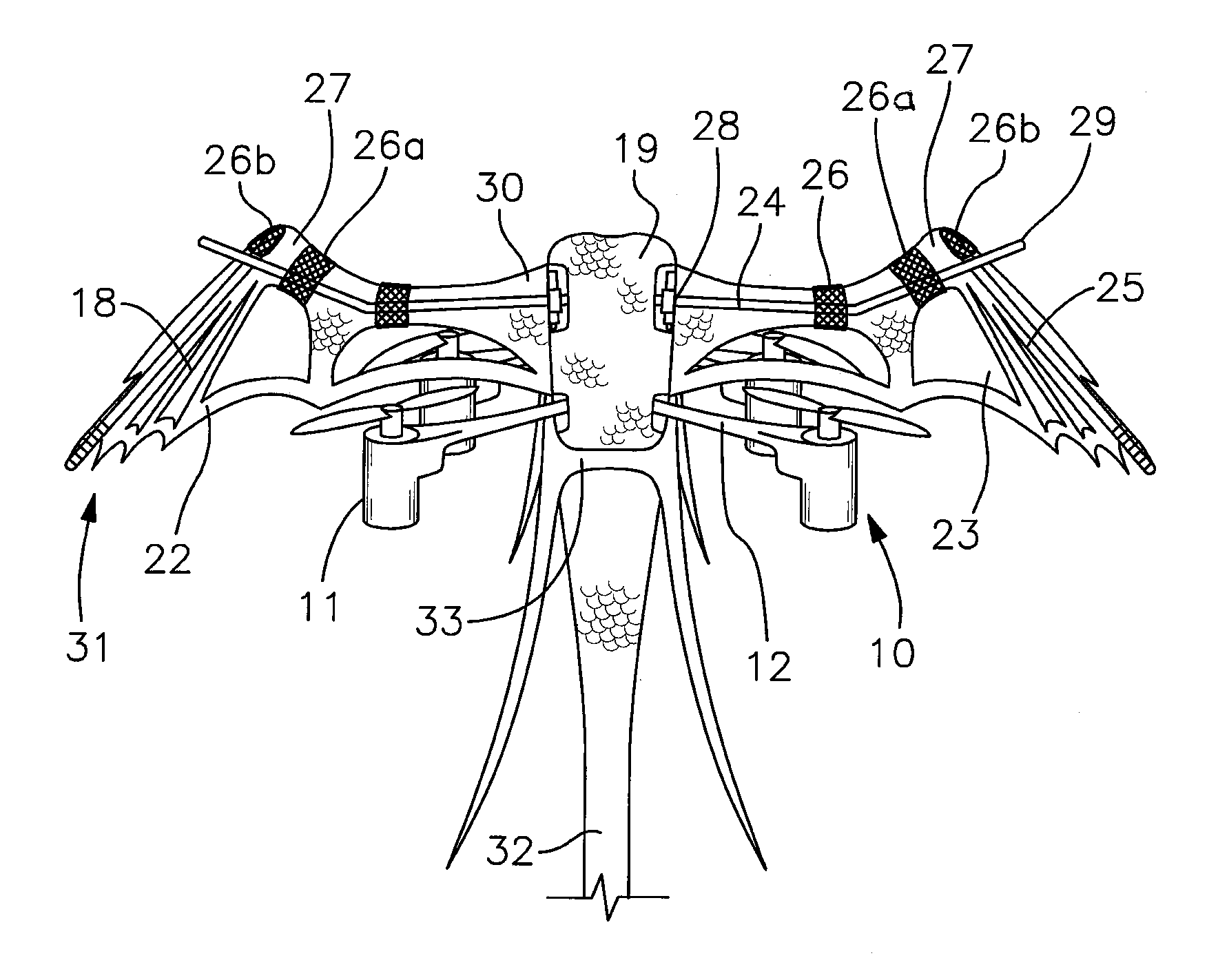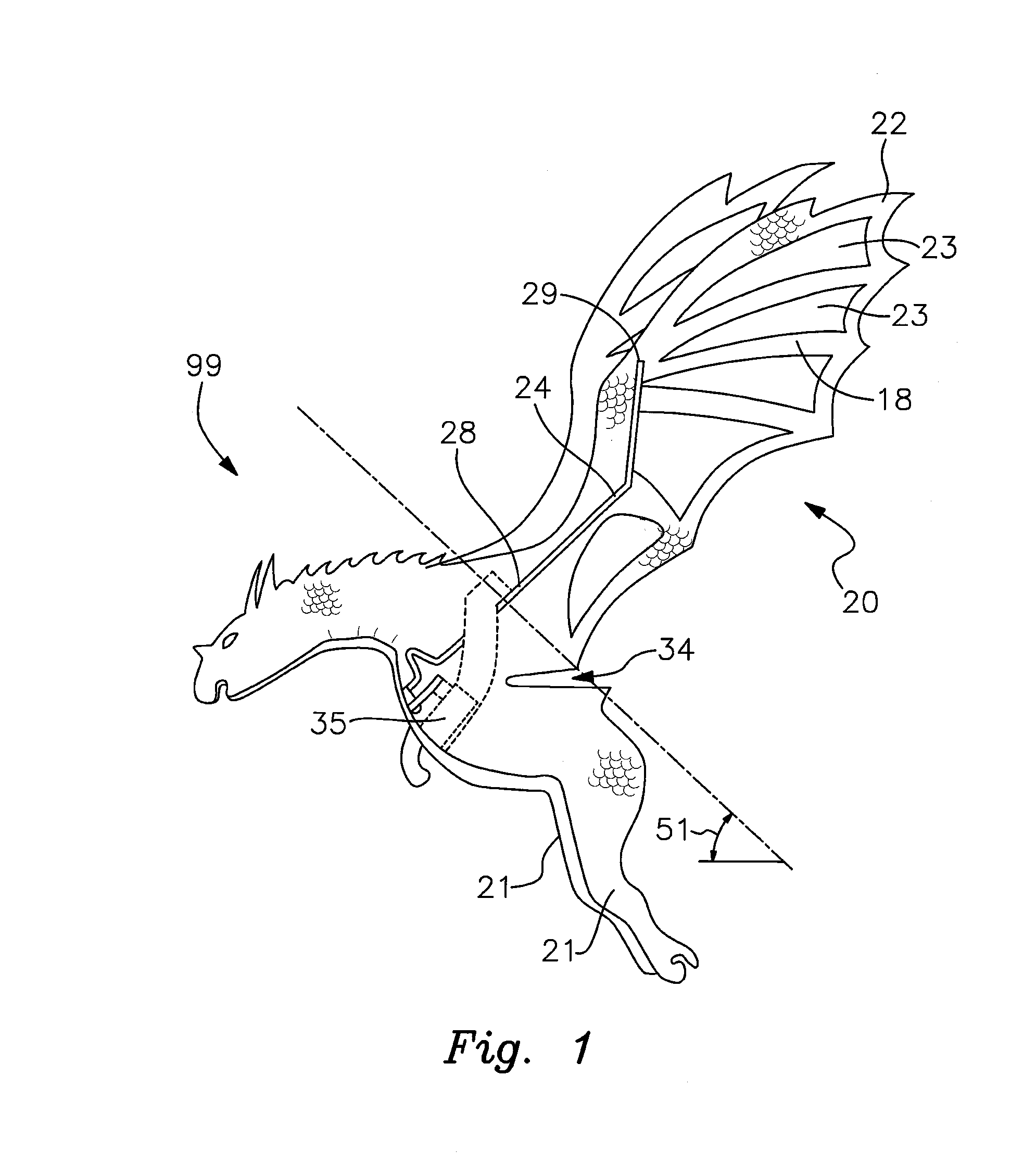Hovering toy figure
a toy figure and hovering technology, applied in the field of remote control flying toys, can solve the problems of mechanical and awkward appearance of toys during flight, the arrangement of wings in these toy figures does not produce a realistic flight simulation of the actual figure, and the toy material is usually unstable and difficult to maneuver, so as to reduce the aerodynamic force, reduce the form and stiffness of the wing material, and minimize the effect of bouncing
- Summary
- Abstract
- Description
- Claims
- Application Information
AI Technical Summary
Benefits of technology
Problems solved by technology
Method used
Image
Examples
Embodiment Construction
[0020]With reference to the drawings, the invention will now be described with regard to the best mode and the preferred embodiment. In general, the device is a remote-controlled, hovering toy figure in the shape of a winged bird, reptile, mammal, or mythical creature, wherein the flapping wings simulate flight of the figure. The embodiments disclosed herein are meant for illustration and not limitation of the invention. An ordinary practitioner will appreciate that it is possible to create many variations and combinations of the following embodiments without undue experimentation.
[0021]By way of example and not limitation, the following discussion will generally present the hovering toy FIG. 99 in the context of a dragon-shaped body. However, it will be appreciated that the hovering toy FIG. 99 may take the form of a variety of other creatures, such as bird, reptile, mammal, or mythical creature. As used herein, the terms “right,”“left,”“forward,”“rearward,”“top,”“bottom,” and the ...
PUM
 Login to View More
Login to View More Abstract
Description
Claims
Application Information
 Login to View More
Login to View More - R&D
- Intellectual Property
- Life Sciences
- Materials
- Tech Scout
- Unparalleled Data Quality
- Higher Quality Content
- 60% Fewer Hallucinations
Browse by: Latest US Patents, China's latest patents, Technical Efficacy Thesaurus, Application Domain, Technology Topic, Popular Technical Reports.
© 2025 PatSnap. All rights reserved.Legal|Privacy policy|Modern Slavery Act Transparency Statement|Sitemap|About US| Contact US: help@patsnap.com



